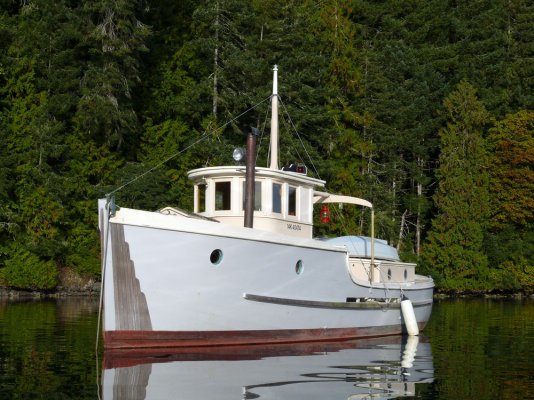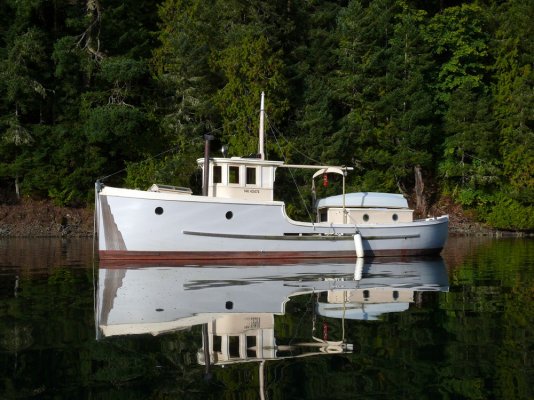Saw this beauty in Tod Inlet in BC the other week.* Don't know anything about it--- it has no visible name or hailing port and we didn't see anyone aboard to ask.* So I don't know if it is a converted fishboat or was built this way.* I suspect it was built this way as it's pretty small to have been a commercial troller or gillnetter, plus the high forward section with the portlights and peaked hatch are not typical fishboat features in this basic style of boat.
-- Edited by Marin on Saturday 26th of September 2009 09:21:39 PM
-- Edited by Marin on Saturday 26th of September 2009 09:21:39 PM


